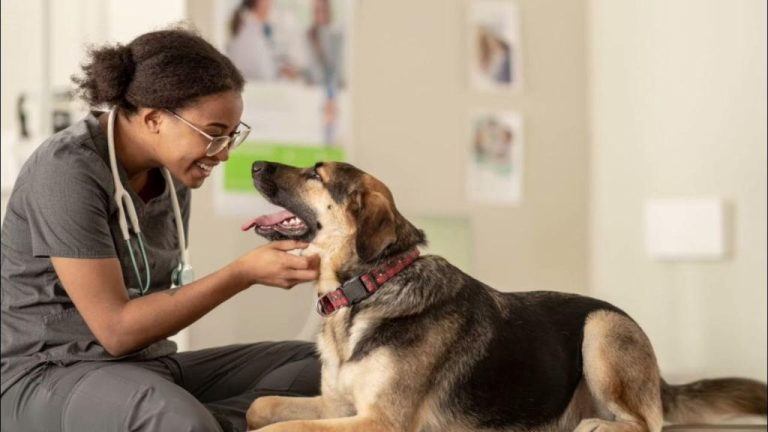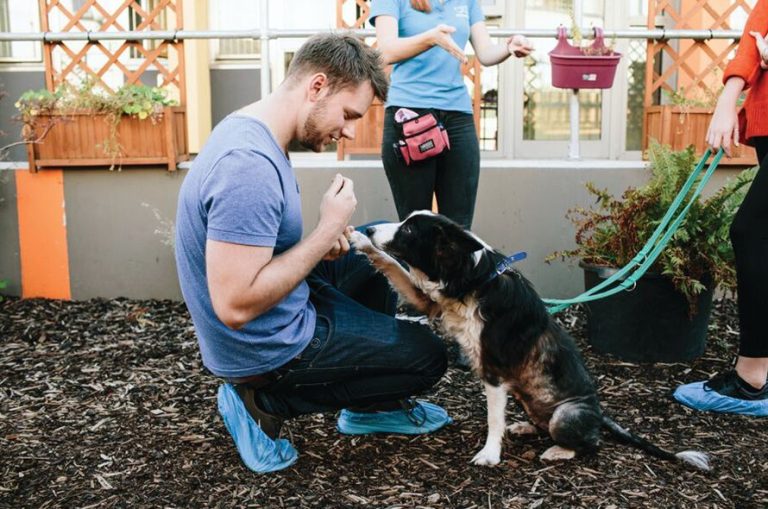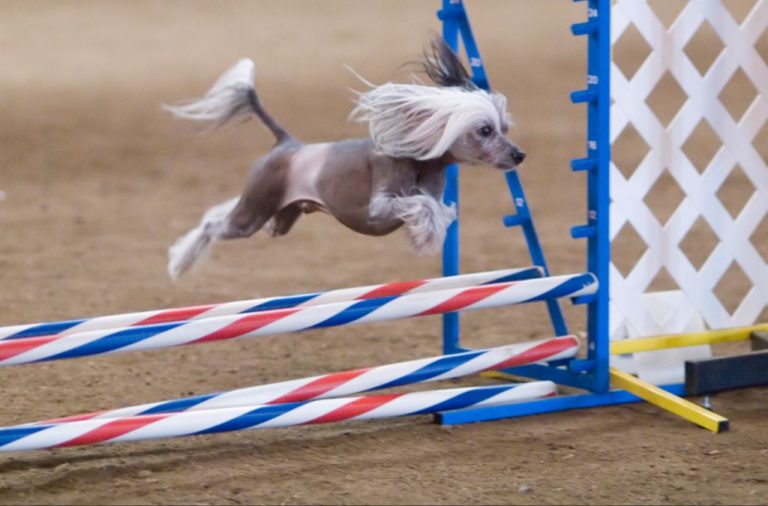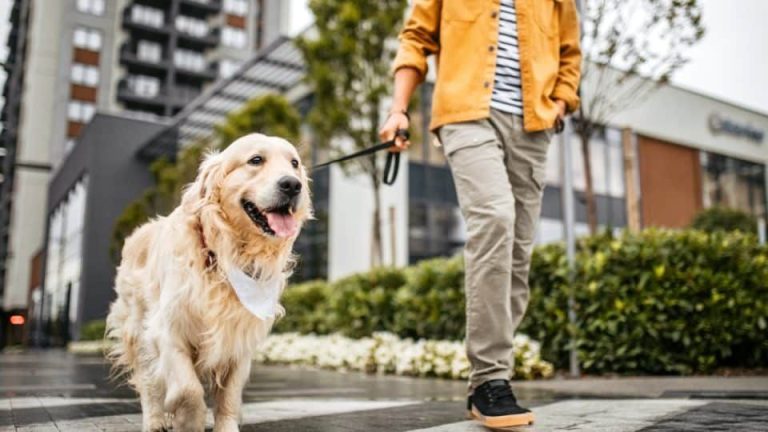Understanding Clicker Training: A Beginner’S Guide
What is Clicker Training?
Clicker training is a method of animal training that uses a small handheld device called a “clicker” to mark precise moments when a desired behavior occurs. It takes advantage of the principle of operant conditioning, where a desired behavior is reinforced through positive reinforcement and reward.
The origins of clicker training can be traced back to marine mammal trainers in the 1940s, who used whistles and other audio cues to signify moments of correct behavior How to Clicker Train Your Dog: 11 Steps (with Pictures) – SVTI. The clicker itself was popularized by animal trainer Karen Pryor in the 1980s as an alternative to the whistle.
Here’s how clicker training works:
- A trainer clicks the clicker the exact moment the animal performs the desired behavior. This “marks” the behavior.
- Immediately after the click, the trainer rewards the animal with a tasty treat. This reinforces the desired behavior.
- With repetition, the animal associates the sound of the click with the forthcoming treat. The click becomes a “secondary reinforcer”.
- Eventually the animal will perform the desired behavior in anticipation of hearing the click and getting the treat that follows.
The benefits of clicker training compared to other methods are:
- It provides precise timing to mark exact moments of desired behavior.
- The click sound is consistent, clear, and less open to human error.
- It employs positive reinforcement rather than punishment or scolding.
- The animal is motivated to perform for the reward.
- It builds a bond of trust and cooperation between animal and trainer.
Understanding the Clicker
The clicker is a pivotal tool in clicker training. It allows the trainer to precisely mark the exact moment the dog performs the desired behavior (Duncan and Dudly 3). When the dog hears the click, it understands that a reward will follow for that marked action. The click therefore becomes a “conditioned reinforcer” that reinforces the desired behavior (Bullifieds).
The importance of the click lies in its precise timing. As soon as the dog performs the target behavior, the trainer clicks, allowing the dog to connect the click with that specific action. The clicker enables the trainer to “capture” behaviors the instant they occur before rewarding the dog (Duncan and Dudly 6). This precision is difficult to achieve with voice commands alone.
By consistently clicking desired behaviors, dogs learn to repeat those actions. The click marks the behavior, while the reward motivates the dog to perform that behavior again. This is how dogs systematically learn cues and commands through clicker training.
Choosing a Clicker
When selecting a clicker for dog training, there are a few key factors to consider:
Sound – The clicker should make a clear, consistent clicking noise. Avoid clickers that make a dull or muffled sound. Most trainers prefer a high-pitched click (source).
Size – The clicker should be easy to hold and press. A smaller clicker that fits comfortably in your hand or a keychain clicker are good options (source).
Ergonomics – Look for a clicker with an ergonomic shape and grooves for your fingers to make it easy to click repeatedly. Avoid clickers that require a lot of force to press.
There are many clicker brands to choose from like Karen Pryor, PetSafe, and StarMark. Consider sound, size, and ergonomics when selecting a clicker for effective training.
Getting Started
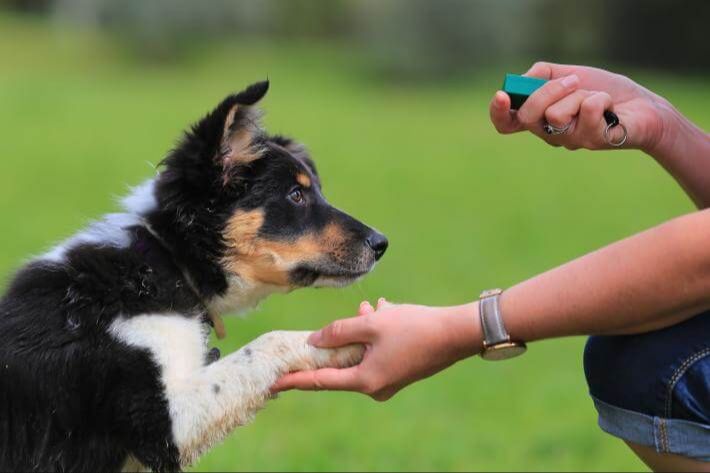
Clicker training relies on teaching the animal to associate the “click” sound with receiving a reward. This process is known as “charging the clicker.” To charge the clicker:
- Have the clicker and treats ready.
- Click once. Immediately after clicking, give your dog a treat. The click should happen a fraction of a second before giving the treat.
- Repeat this process until your dog starts to get excited when it hears the click because it knows the treat is coming.
- Do a few repetitions every day until your dog consistently reacts to the clicker sound in anticipation of the treat. This builds a strong association between the click and reward.
According to petspy.com, charging the clicker properly is the first step in understanding how to use it effectively when training your dog.
Timing is Key
Proper timing is essential for clicker training to be effective. The click should mark the exact moment the dog performs the desired behavior. This allows the dog to understand what action earned the click and reward.
It’s important to click during the behavior, not before or after. For example, if you’re training a dog to sit, the click should happen at the moment their hindquarters touch the ground in a sitting position. Clicking too late or too early will confuse the dog about which behavior is being rewarded.
Getting the timing right takes practice. Be patient with yourself as you develop the skill. It can be helpful to practice with toys first. Click right as you toss a ball or toy, then reward. This allows you to get comfortable with the coordination required.
According to this video, a common mistake is clicking too early or too late. With patience and consistency, you’ll get better at clicking at just the right moment.
Remember, the click always comes before the reward. If your timing is off, the dog may not understand what behavior earned the treat. With good timing, the click communicates clearly to make training efficient and effective.
Training the First Behaviors
When you start clicker training your dog, it’s important to focus on teaching some basic behaviors first. This allows your dog to understand how clicker training works before moving on to more complex behaviors.
To train the first behaviors:
- Use cues like verbal commands (“sit”, “down”) or hand signals (pointing down for “down”). Be consistent with whatever cues you choose.
- Mark and reward even small steps toward the desired behavior at first. For example, click and reward when your dog’s hind legs start to lower into a sit.
- Gradually shape the behavior by only rewarding the end goal. For example, only click when your dog’s butt fully touches the ground in a completed sit.
- Shape more complex behaviors by breaking them into small achievable steps and rewarding each incremental improvement.
It’s important to be patient and reward generously in the early stages of clicker training. Moving slowly and setting your dog up for success will build their confidence and understanding of clicker training.
Some good first behaviors to train include:
- Sit
- Down
- Look at me
- Touch target
Once your dog has mastered some basics, you can move on to shaping more advanced skills like weaving through poles or rolling over (source). The key is to start simple and reward generously in the beginning.
Proofing Behaviors
Proofing is an important next step after your dog has initially learned a behavior using clicker training. Proofing tests the behavior in different environments and situations to ensure your dog will perform the behavior reliably when you ask, even if there are distractions around.
Start proofing in minimally distracting environments first, like inside your home. Reward your dog intermittently with the clicker and treats for performing the behavior correctly. Then gradually increase the difficulty by proofing in more distracting environments like the backyard, a park, a pet store, etc. Go back to continuous reinforcement with the clicker if your dog begins having trouble performing the behavior.
If you encounter setbacks during proofing, remain calm and patient. Consider whether you have moved too fast into a difficult environment–if so, return to an easier environment and build back up more gradually. Use high-value treats to keep your dog’s motivation and attention. And remember that proofing takes time–stay consistent with it and your dog will learn to perform behaviors reliably.
For more tips, check out these sources:
According to clickertraining.com, mixing well-proofed cues in random order teaches dogs that cues will be reliable in any order. This builds confidence for real-world situations. (http://www.clickertraining.com/node/2279)
Karen Pryor recommends first teaching duration of behaviors before proofing. Proofing behaviors like down, sit, and stay in many locations ensures the dog will perform them anytime, anywhere. (http://www.clickertraining.com/node/2077)
Advancing Training
As your dog becomes competent with the basic behaviors, it’s time to increase criteria and difficulty slowly to continue strengthening the behaviors. Make sure to break down complex behaviors into many small, achievable steps that set your dog up for success. Increase distractions, distance, and duration very gradually.
Use jackpots (delivering many treats in rapid succession) to mark major training successes and breakthrough moments. Jackpotting helps amplify your dog’s motivation and enthusiasm. As explained on the HippoLogic blog, jackpots act as secondary reinforcers by transferring some of the positive emotions and stimulation of receiving a food reward to the clicker sound (HippoLogic, 2015). Your dog begins to associate the click not just with a treat, but with an extra special reward delivery. Done right, advancing training through jackpots and raising criteria will keep your dog engaged, happy, and progressing.
Common Mistakes
Some common mistakes that beginners make with clicker training include poor timing of the click, not rewarding enough, and progressing too quickly.1 Proper timing of the click is essential for the dog to understand what behavior earned the reward. Clicking too early or too late can confuse the dog. It’s important to be patient and click right as the desired behavior is completed.
Additionally, some trainers don’t reward frequently enough. The reward should come immediately after the click, while the behavior is still fresh in the dog’s mind. Not rewarding frequently enough can cause the dog to become frustrated. It’s recommended to reward very frequently in the early stages of training.
Finally, some owners advance too quickly before proofing behaviors. It’s important to practice behaviors in many different environments and distraction levels before expecting reliable responses. Rushing through the training stages can undermine progress. Patience and gradually increasing difficulty is key.2
Additional Tips and Resources
Clicker training takes time and practice to master. Here are some additional tips and resources to help you continue learning and improving your clicker training skills:
Find a certified trainer – Consider working with a professional dog trainer who is experienced with clicker training. They can observe you, provide feedback, and help troubleshoot any issues you’re having with the training process.
Read recommended books – There are many excellent books that provide in-depth guides and step-by-step instructions for clicker training. Some popular options are The Click That Teaches by Karen Pryor and Getting Started: Clicker Training for Dogs by Karen Pryor.
Watch instructional videos – Online video tutorials can help demonstrate proper clicker training techniques. Search for “clicker training” on YouTube or sites like Trainers Academy to find free educational videos.
With continued practice and learning, you’ll be able to use clicker training to teach your dog all sorts of useful behaviors and tricks. Be patient with yourself and your dog as you work to master this effective training method.

